#Nói albinói
Explore tagged Tumblr posts
Text
kino.avi
Poslední dobou vyžerou většinu nejlepších distribučních filmů roku karlovarský festival a léto vůbec. Přesto i na začátku podzimu zbývá distributorům pár filmů, které stojí za to. Jako třeba druhá část povídkového filmu Dalších deset minut.
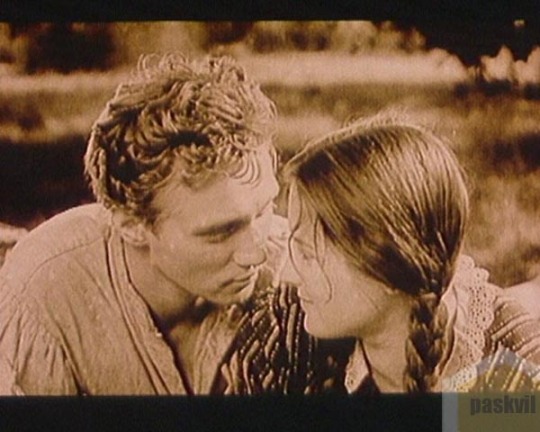


Dalších deset minut II / Ten Minutes Older: The Cello
Stejně jako u prvního dílu z ledna: zase slavní režiséři jako Bernardo Bertolucci, Jean-Luc Godard, Volker Schlondorff a Jiří Menzel, zase naprostá volnost ve způsobu zpracování tématu Času, zase různě kvalitní minifilmy. Ten Jiřího Menzela o Rudolfu Hrušínském je sice ze sesbíraných materiálů, ale přesto působivý a dojemný.
premiéra: 4.9.2003

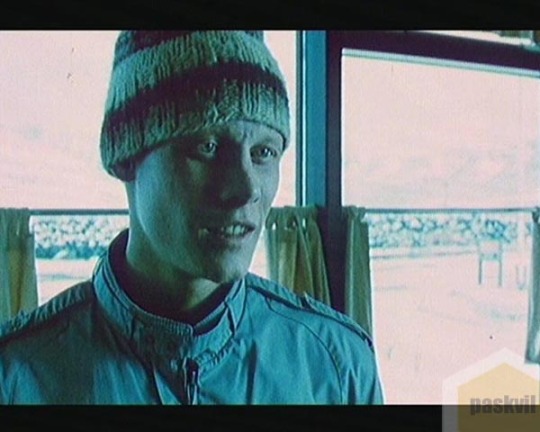
Albín jménem Nói / Nói albinói
Žije tam míň než 300.000 lidí, 4/5 území jsou neobydlené, většinou je tam zima a skoro každý druhý je umělec. Kdyby se měla počítat umělecká úspěšnost států vzhledem k počtu obyvatel, tak Island by asi vyhrál.
Další z líhně úspěšných islandských umělců je režisér Dagur Kári. Jeho debut Albín jménem Noi je klidný a atmosferický, ale stejně jako pod islandskou zemí v něm pod kůží hlavního hrdiny doutná sopka. A na to se kouká pěkně. A navíc díky soundtracku i dobře poslouchá.
premiéra:11.9.2003
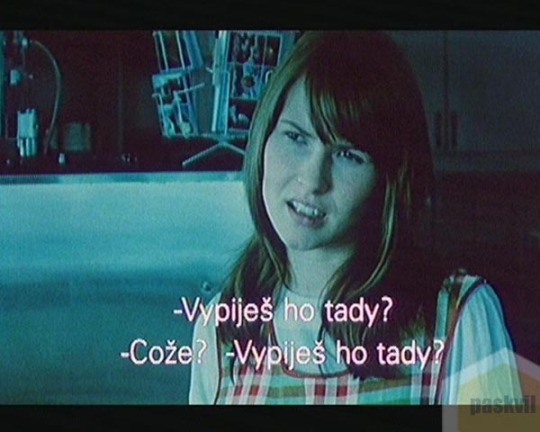
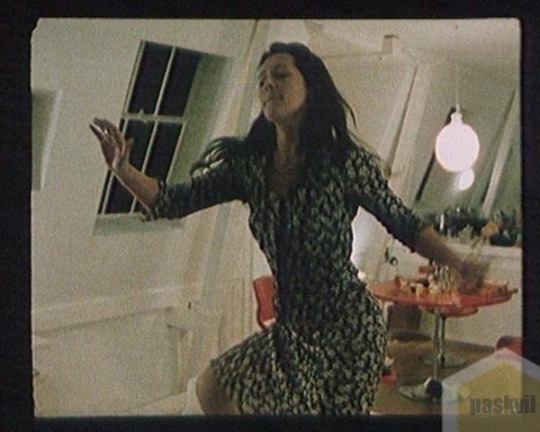
Starý, nový, půjčený a modrý / Se til venstre, der er en svensker
A ještě jedna severská premiéra: jestli vám ta syrová kamera, nepřikrášlený zvuk a dokumentární střihy něco připomínají, pak ano, tenhle dánský film Starý, nový, půjčený a modrý je natočený podle Dogmatu 95. Jestli už není ten manifest vyčpělý je jedna věc, že se milá romantická komedie obejde bez Meg Ryan je věc druhá… Pro vysvětlení ukázky: ta holka se má za dva dny vdávat a tohle není její snoubenec.
premiéra: 2.10.2003

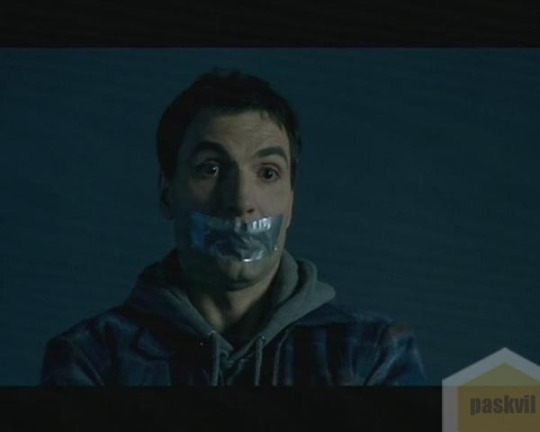
Jedna ruka netleská
Zatím bez komentáře. Po premiéře se uvidí.
premiéra: 18.9.2003
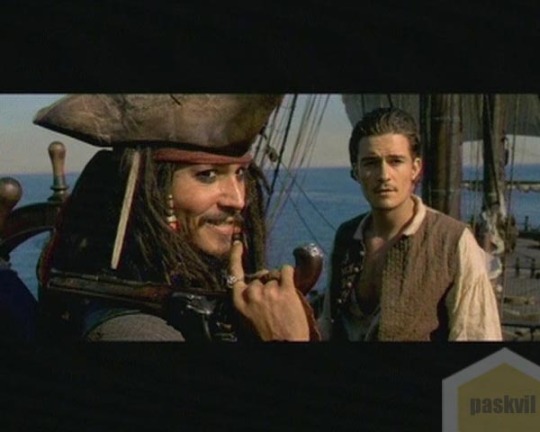
Piráti z Karibiku: Prokletí černé perly / Pirates of the Caribbean: The Curse of the Black Pearl
Kdybyste se chtěli z té kultury vzpamatovat, tak výplach zaručí dva blockbustery: Piráti z Karibiku je dlouhá a průměrná pohádka, která okouzluje jen díky neuvěřitelným kreacím Johnnyho Deppa.
premiéra: 28.8.2003

Terminator 3: Vzpoura strojů / Terminator 3: Rise of the Machines
Naopak Terminátor je zpátky v netušeně skvělé formě. Trojka je svižná, přiměřeně hloupá a hlavně vtipná. A ten konec se vyvedl. Šup sem se čtyřkou…
premiéra: 7.8.2003
#Paskvil#2003#0318#kino.avi#Ten Minutes Older#Nói albinói#Se til venstre der er en svensker#Jedna ruka netleská#Pirates of the Caribbean#The Curse of the Black Pearl#Terminator 3#Rise of the Machines#Saša Michailidis
0 notes
Text
52 weeks, 52 movies: march
LAUGHS NERVOUSLY
yeah this is super-late i know i know. i'll try to be more timely with april. :E
no rewatches this month; faves, as always, in bold.
new countries added to the cinematic world map: morocco, chad, and the philippines. i still have a pretty heavy reliance on american/uk films, but did fit 18 countries in. so i guess i kept a decent amount of variety in the diet.
the whaler boy (russia) — leshka (vladimir onokhov), a teenage boy in the remote village of chukchi, becomes enamored with a camgirl (kristina asmus) from detroit and plans to journey to america to meet her.
longtime mutuals know how much the movie nói albinói means to me — it’s my icon and has been for years, and was a livejournal fixture long before i joined tumblr. this movie recaptured the magic of watching that for the first time. they’re spiritual cousins of movies, both set in bleak, isolated landscapes stripped of all color; their teenage protagonists both ache with impossible want for the world beyond their small towns. their lives are monotonous and grim, livened only by the promise of women just out of reach. the black, deadpan comedy runs strong. leshka’s grandfather (nikolay tatato) speaks frankly of his plans for his own demise with the same energy one would use to discuss the weather, and i thought back to the bark of laughter i let out at nói’s dispassionate blood-splash scene.
it’s both violent — during a whale hunt, the men stand in a tide foaming with blood and viscera as they pull a carcass to shore — and hauntingly beautiful, such as in a scene where leshka and his friend (vladimir lyubimtsev) take a motorcycle ride through the endless, empty landscape. we see moments of gentle humanity juxtaposed with brutality. a power failure leads to some families bonding in soft candlelight, but sends leshka into a frenzy when he loses access to the girl who lives inside his computer screen. the dialogue goes from wryly funny (‘i’m busy today. i’ll definitely die tomorrow,’ muses leshka’s grandfather) to agonizingly painful, as during the retelling of a story about a chukchi resident who crossed the bering strait over to alaska and met a bad end as a result.
leshka is a tour de force performance from vladimir onokhov, relying less on dialogue and more on onokhov’s subtly expressive face. he conveys the universal yearning of frustrated adolescence without a word, while saving much of his speech for hushed one-way conversations with his dream girl in detroit. he has a quietly powerful magnetism that draws your attention whenever he appears.
it’s a strange, hazy film, rich with metaphor and dreamscape. lovely, profound, and absolutely one of the finest films i’ve seen all year.
millie lies low (new zealand) — thanks to an anxiety attack, architecture student millie (ana scotney) misses her flight from wellington to new york for her internship, but decides to pretend to her family and friends that she’s there and thriving.
there’s something particularly special about a movie that you forget as you’re watching. i struggled to stay focused on this, and had to rewind several times because i kept losing interest.
the problem is that the movie never quite commits to itself. it shies from letting its emotional beats land; nothing seems to carry much consequence. when millie learns she doesn’t have the cash to replace her ticket, it dips into farcical schemes — trying to take out a personal loan and stealing her own car as collateral; skulking in sweatshirt and sunglasses around family and friends’ usual haunts; camping in a tent she uses as the backdrop for crudely photoshopped images for social media. (how any adult with a functioning set of eyes would fall for millie’s low-effort ipad creations is beyond me, but i digress.) it makes half-hearted attempts at addressing things like massive time differences, but skirts the question of ‘wouldn’t the firm hosting the internship just get in touch with millie’s family when she failed to show up?’
there are tantalizing ideas that could be coaxed out of the material in the hands of a more focused director. it’s clear that millie is hamstrung by others’ expectations and her lack of faith in her own potential, but when her ruse is exposed, the landing is so soft that it renders all of millie’s hysterical schemes rather ridiculous. there was so little shock or betrayal or anger that the side characters ended up feeling like unfinished caricatures. even the great jillian nguyen, as millie’s best friend, is wasted — the movie nudges itself into something resembling energy when it exposes nguyen’s carolyn in flagrante delicto with millie’s boyfriend, but then fizzles out again. i found it impossible to care about anyone because the movie found it possible to try to make me care. i’d say it ends with a whimper, but i think a whimper would have taken more effort than this was willing to put in.
benny’s bathtub (denmark) — a bored little boy named benny (bo jakobsen) follows his pet tadpole down the drain of his bathtub and into a magical world of adventure.
danish kids in the ‘70s lucked out with this bite-sized animated gem, a lush, multi-media riot of bright color, jazzy music, and quirky characters. a pair of skeletons argue and end as piles of mismatched bones, while a mischievous color-changing octopus interferes with a nattily-dressed shrimp’s romantic designs on a trio of mermaids. a furious crab and his smaller underlings try to deal out despotic, but ultimately impotent, justice. it understands the blithe logic of childhood and merrily dips from vibrant set piece to vibrant set piece at a lively pace without ever overthinking or overexplaining. thick acrylic strokes pop against delicate watercolor backgrounds, and some of its more psychedelic moments, such as the rapid-fire color change benny’s octopus friend undergoes during his solo number, bring to mind the dizzying spectacle of the ‘lucy in the sky with diamonds’ scene in yellow submarine.
much of the pleasure of this movie is experiencing it for yourself, because it can’t quite adequately be explained. it’s such a wondrous feast for the eyes that descriptions can’t quite do it justice. it’s lovingly rendered in every frame. powerhouse danish jazz acts provided the score and a wealth of musical numbers — the squabbling skeletons argue about the virtues of their respective mothers, terrifying pirate queens. (‘she screamed with joy when she saw blood,’ one fondly notes.) a particularly inventive scene in the middle makes use of photorealistic silhouettes that splash in and out of frame like squirted ink.
it’s a beloved classic even now in denmark, and for good reason. it’s one of the most stunningly unique films i’ve ever had the pleasure of seeing. i treasured every moment.
the tune (usa) — threatened with the loss of both his job and his girlfriend if he doesn’t deliver a pop hit by day’s end, a struggling songwriter (daniel neiden) finds himself journeying to the off-kilter world of flooby nooby, whose odd residents might help him find the perfect line.
i made this a double feature for a movie night pick, alongside benny’s bathtub. they make a good pair, as they each carry their own wacky, anarchic energies. rather than the jewel tones of benny’s, the tune opts for delicate colored pencil, which gives a fuzzy, twitchy energy to the proceedings — a perfect match for del’s frazzled mental state. the animation is utterly elastic — people, possessions, and places all distort with reckless abandon, twisting and contorting and folding in on themselves. alongside the dominant colored-pencil artwork, director bill plympton dabbles in a variety of styles, including thick-lined matte animation, pastels, and scratchy rotoscoped realism, so that each new scene carries with it endless, playful possibility. a man’s head transforms into a hand sprouting from his shoulders and fish swim out of his palm; a hot dog and bun have a romantic rendezvous in a field of flowers; a dog crooning elvis tunes wobbles under the weight of his massive pompadour. in an extended gag, two businessmen constantly up the ante of comical punishments for each other, such as one of them pouring plant feed on the other’s head, causing his head to turn to grass.
the storyline is admittedly secondary to plympton’s whimsical sensibilities. del does try to keep pushing forward in his mission to get to his boss’ (marty nelson) office, but his journey mostly exists to facilitate as many madcap escapades can fit into 69 minutes. composer maureen mcelheron (also the voice of del’s girlfriend, didi) packs the proceedings with a musical cornucopia of styles — the aforementioned elvis, tango, wistful country, rumbling blues, show tunes, and surf rock among them, on top of del’s jingly pop tune attempts. i still find myself humming ‘my love for you / is equal to…’ from time to time.
it’s something of a polarizing film, relying as heavily as it does on its music and its cheerful refusal to stick to its own stated narrative. much like its noodling animation, it meanders in and out of ideas, and either you submit to its chaos and let it lead you along, or you find the entire affair a bit insufferable and self-satisfied. i fell firmly into the former camp. i’m not familiar with plympton’s name offhand, but the whole affair felt so cozy and familiar to me — it came out in 1992 and somehow reminded me of every piece of oddball animation i saw as a child — that not being charmed by it was never an option.
march viewing: other titles
sequin in a blue room (australia)
this is me…now (usa)
lingui (france/chad)
a day at the races (usa)
fireworks (2018) (japan)
friends and strangers (australia)
butterflies are free (usa)
not of this earth (1988) (usa)
never steal anything small (usa)
return to oz (usa)
juha (finland)
the runner stumbles (usa)
taxi! (usa)
my year without sex (australia)
her highness and the bellboy (usa)
ellen is leaving (new zealand)
paris is burning (usa)
shin kamen rider (japan)
bed friend (thailand)
change of life (portugal)
beach rats (usa)
young rock s1 (usa)
police story (hong kong)
young rock s2 (usa)
you never know women (usa)
no direction home (2023) (japan)
leonor will never die (philippines)
young rock s3 (usa)
the county (iceland)
beautiful thing (uk)
the short history of the long road (usa)
quiet on set: the dark history of kids’ tv (usa)
did you wonder who fired the gun? (usa)
the big country (usa)
drunken birds (canada)
blue velvet (usa)
i hired a contract killer (finland)
ham on rye (usa)
my name is lisa (usa)
salvation army (morocco)
batman and robin (usa)
children of the mist (vietnam)
2 notes
·
View notes
Photo
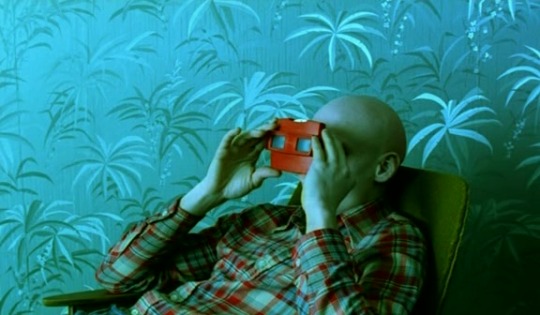
Nói albinói [Noi the Albino] (Dagur Kári - 2003)
#Nói albinói#Noi the Albino#Dagur Kári#Kári#2000s movies#2000s cinema#2000s#Icelandic drama film#Icelandic cinema#cinema of Iceland#cinema#Iceland#Icelandic movies#Icelandic films#European cinema#Europe#northern Europe cinema#movies#European movies#northern Europe#northern Europe movies#drama film#Icelanders#Tómas Lemarquis#Bolungarvik#Slowblow#view-master
8 notes
·
View notes
Photo








3 notes
·
View notes
Text
I watched მე ვარ ბესო (I’m Beso, 2014) today because one of the Georgian language vloggers said she thought it was a better Georgian LGBT story than ATWD and...???* I’m still kinda mad on behalf of my fave, but mainly I see what Levan Akin means when he says “Georgian cinema is amazing, but it’s very reverential. ‘Pretentious’ makes it sound negative, so that’s not the right word, because I love it — but I wanted to make something youthful, energetic, fun” (quote source). მე ვარ ბესო is good, it’s just as freewheeling and open-ended as ATWD, but Beso is impenetrable to me, and while that’s not a problem per se - the film reminded me of a bunch of Icelandic films like Nói Albinói,** or Andrea Arnold’s early stuff like Fish Tank - it was never really a story about Beso. It wasn’t entirely a film about his brother’s love for a man either, though showing that through Beso’s eyes had the potential to give the usual tale of closeted fear an interesting twist. But it just never really twisted, it was simply a winding meditation on Georgian masculinity - wot AGAIN??

- and the story with Beso and Beka, for all its macho posturing, discussions of whether ‘some people are gay and some people just like being fucked in the ass’, never links up to the rest of it. It’s like if the kids in Y Tu Mamá También wussed out before they went on the road trip. I do wonder if there just wasn’t the possibility of making it more of a coming out/coming of age film for Beso himself with Beka, the separate story with Beso’s brother was just never really integrated.
Georgian cinema likes to make a fuss about how it’s special because of the setting, and I think მე ვარ ბესო relies on that a great deal. But apart from anything, a disillusioned, bored fourteen-year-old boy is maybe never going to be the kind of character whose perspective grants much insight into the people around him. Beso’s interests - rap, the potential to make lots of money, girls, getting high, petty shenanigans - aren’t unusual, his dead-end life isn’t as unfamiliar as perhaps the director thinks it is to other audiences. The film wanted to highlight so many issues around the dying village it depicted, but it all felt about as half-hearted as Beso’s approach to most things. There were plenty of points of interest, and I’ll be the first to talk about how the seams and stitches show in ATWD and it’s not the best film I saw this year (it’s just the one that pierced my soul, man), but ATWD has passion by the bucketload, it has defiance and therefore it has hope. მე ვარ ბესო - not so much.
You can, however, watch all of მე ვარ ბესო free, subtitled in English, on vimeo:
vimeo
* I mean, she’s based in Germany and she also seemed to think that homophobia wasn’t much of a problem in Georgia and the population was generally chill about these things. Let me tell you, my vocab list of Georgian obscenities really comes into its own when I read comments on Georgian-language coverage of ATWD, and there are a lot of activists who have left the country in the last few years because of the level of violence shown towards them.
** Though perhaps because violence is rarer in Icelandic society they’re far less coy about depicting it than Georgian cinema is - it’s a thing I grew to quite like in Icelandic cinema, that a fluffy comedy might suddenly go feral and savage with no warning (still kind of reeling from Sumarlandið), but in the context of the Georgian films I’ve seen I’m very glad the threat of violence is generally kept to the edges of the story.
#first time i've felt compelled to write a film review in ages#i might revive the old wordpress if this happens again!#მე ვარ ბესო#i'm beso#films#sometimes i have opinions#Has my tumblr turned into a langblr oops
2 notes
·
View notes
Text
İzledikçe üşüten film tavsiyesi
İzledikçe üşüten film tavsiyesi

Filmin adı: Nói albinói (Buzdan Hayaller? WTF?) Yapım yılı: 2003 Yönetmeni: Dagur Kári Oyuncular: Tómas Lemarquis, Þröstur Leó Gunnarsson, Elín Hansdóttir, Anna Friðriksdóttir Havaların soğuduğu şu günlerde (Oha yarına 22°C diyor?) kalbinizi ısıtan ama üstünüze yorgan alma isteği uyandıran tatlı mı tatlı bir İzlanda filmine ne dersiniz? Evet dediğinizi duyar gibiyim tatlı qıslar. (more…)
View On WordPress
#Anna Friðriksdóttir#Þröstur Leó Gunnarsson#Dagur Kári#Elín Hansdóttir#Iceland#Nói albinói#Noi the albino#nordik#Tómas Lemarquis#İzlanda
0 notes
Text
17 películas retratarán Islandia en la Seminci 2017
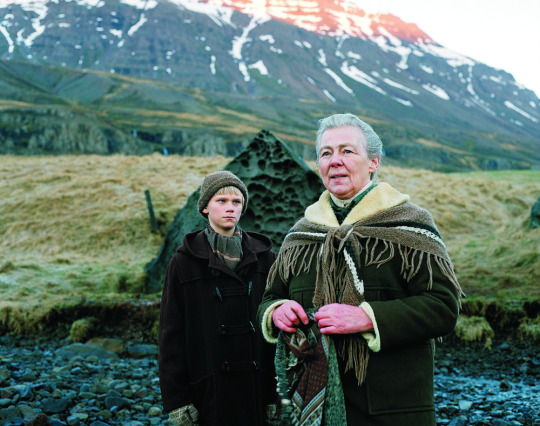
Imagen: Cold Light.
Islandia será el país protagonista de la próxima edición de la Seminci que se celebrará del 21 al 28 de octubre. Estos son los títulos elegidos:
Cold Fever (Á köldum klaka), Fridrik Thór Fridriksson (1995).
101 Reykjavik, Baltasar Kormákur (2000).
The Seagulls Laughter (Mávahlátur), Águst Gudmundsson (2001).
Noi the Albino (Nói Albinói), Dagur Kári (2003).
Cold Light (Kaldaljós), Hilmar Oddsson (2004).
The Amazing Truth about Queen Raquela (Hinn undursamlegi sannleikur um Raquelu drottningu), Olaf de Fleur, 2008.
Country Wedding (Sveitabrúdkaup), Valdís Óskarsdóttir (2008).
Jitters (Örói), Baldvin Z (2010).
Undercurrent (Brim), Árni Ólafur Ásgeirsson (2010).
Our Own Oslo (Okkar Eigin Osló), Reynir Lyngdal (2011).
Either Way (Á Annan Veg), Hafsteinn Gunnar Sigurdsson (2011).
Volcano (Eldfjall), Rúnar Rúnarsson (2011).
Of Horses and Men (Hross �� oss), Benedikt Erlingsson (2013).
Metalhead (Málmhaus), Ragnar Bragason (2013).
XL, Marteinn Thorsson (2013).
Heartstone (Hjartasteinn), Guðmundur Arnar Guðmundsson (2016).
The Together Project (Sundáhrifin), Sólveig Anspach (2016).
3 notes
·
View notes
Text
Entrada 1: MIS LENGUAS Y YO
Mi nombre es Zlata y hablo fluidamente cinco lenguas: el ruso, el francés, el catalán, el castellano y el inglés. La primera de ellas es mi lengua materna. Aunque llevo en España desde que tengo nueve años, a veces, noto que mi lengua materna es más el español que el ruso. Según mi punto de vista, mis lenguas L2 serían el francés y el inglés, pues son aquellas que considero que son extranjeras para mí y las que olvido paulatinamente si no las empleo a diario. Asimismo, considero que desde hace dos años poseo una lengua adicional que es el islandés: no tengo la misma fluidez en esta lengua que en las otras cinco, pero sí soy capaz de entender textos a nivel A1.
Generalmente, toda mi familia solo es capaz de hablar el ruso, aunque mis bisabuelos, concretamente mi bisabuela, podían hablar ucraniano, pues eran inmigrantes de esa zona. Asimismo, mis bisabuelos maternos vivieron el período de la Segunda Guerra Mundial y ambos estuvieron años en campos de concentración situados en Polonia, lo cual me hace entender que llegaron a hablar alemán o polaco. El caso de mis abuelos maternos es un poco menos complicado: ambos estudiaron el alemán como lengua extranjera en los años cincuenta o sesenta y son capaces de leer en alemán e incluso entender algunas palabras. Por otra parte, mis bisabuelos paternos pertenecían al colectivo de los tártaros del Volga y, por lo tanto, hablaban el idioma tártaro. En cuanto a mis padres, ambos estudiaron el inglés como lengua extranjera en la universidad, pero no son capaces de hablarlo de manera fluida.
Según el Marco Europeo Común de Referencia, mi nivel de inglés sería el C1, ya que soy capaz de entender textos largos y complejos, expresarme de manera fluida y espontánea, y emplear la lengua para diferentes propósitos (profesionales, sociales, académicos). Mi nivel de francés, en cambio, sería el B2, aunque como comenté anteriormente, si no lo empleo periódicamente, lo puedo olvidar muy rápido. En castellano y catalán tendría un C2, sin tener en cuenta que son lenguas casi maternas para mí. En islandés tendría un nivel meramente inicial, el A1.
Todas las lenguas anteriormente mencionadas las aprendí en la escuela desde los nueve años de edad y, concretamente, el francés desde que tengo diez años. Sin embargo, cuando estudiaba en Rusia hice un curso de un año de la lengua alemana, pero no soy capaz de recordar nada. También realicé traducciones del latín en bachillerato durante dos años. Ni el francés ni el inglés se usaban en mi hogar, pero sí el ruso, el castellano y el catalán. Por lo tanto, en la escuela aprendí el sistema de escritura cirílico y el de las lenguas románicas, lo cual me facilita comprender el italiano, el portugués, el rumano y el ucraniano sin haberlos estudiado anteriormente.
Uno de mis objetivos en los próximos años es mejorar mi nivel de islandés —al menos ser capaz de entender textos más complejos—, aprender turco, pues es el idioma más cercano al tártaro y tener un conocimiento inicial del idioma farsi. La razón de estudiar exactamente estos tres idiomas no está relacionada con conseguir una mejor posición profesional o laboral, sino, simplemente, por interés lingüístico. El islandés lo llevo estudiando un año de manera autónoma y con recursos que encuentro por la red (que son muy pocos, por no decir escasos). El hecho de que sea una de las lenguas que no haya cambiado nada, o muy poco, desde su origen es lo que más me llama la atención. El Institut Nòrdic de Barcelona ofrece cursos de islandés, pero son solamente hasta el A2, y teniendo mis conocimientos lingüísticos consideré innecesario apuntarme a dichas clases porque yo misma podría aprenderlo mediante canciones, películas o cuentas de twitter. El idioma turco me llama la atención solamente porque es muy cercano al idioma tártaro y, de alguna manera, me gustaría tener conocimiento de lo que hablaban mis bisabuelos paternos. Además, es un idioma fácil de aprender, ya que hay muchas herramientas y recursos online. Y, finalmente, el farsi por interés en la cultura persa, sobre todo en la cultura iraní. A diferencia del islandés, el farsi parece tener más presencia en la red.
A mis 24 años de edad, las lenguas que más uso son el ruso, el castellano y el inglés. El inglés lo uso mayoritariamente en empleo, ya que trabajo en una tienda en Paseo de Gracia y los clientes extranjeros usan esta lengua para comunicarse. El ruso lo empleo en mi vida privada, sobre todo con mi familia y en mis aficiones (música, cine, literatura), ya que no me gustaría perder mi lengua materna con el tiempo. Es el castellano, sin embargo, el idioma que más uso: pienso en castellano, me comunico de manera más espontánea y, de hecho, académicamente me siento más segura en esta lengua. Cierto es que el ruso me evoca un sentimiento de nostalgia al usarlo, pero es el castellano la lengua que más me define como individuo.
Estas son algunas de las películas que me sumergieron en la cultura islandesa e iraní:
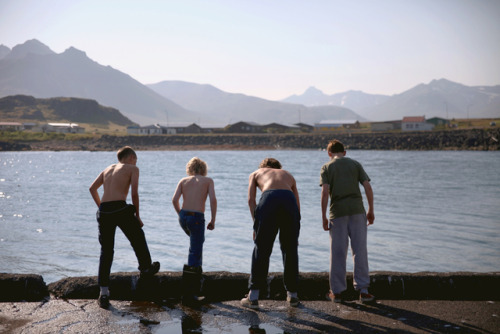
Hjartasteinn (2016)
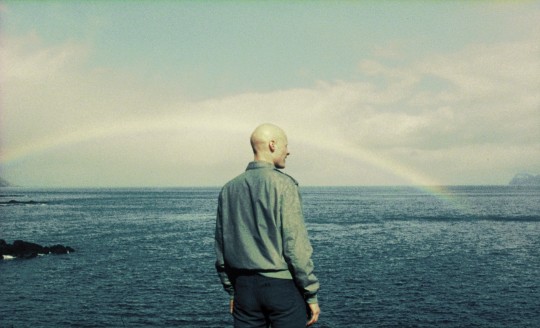
Nói Albinói (2003)

Þrestir (2015)
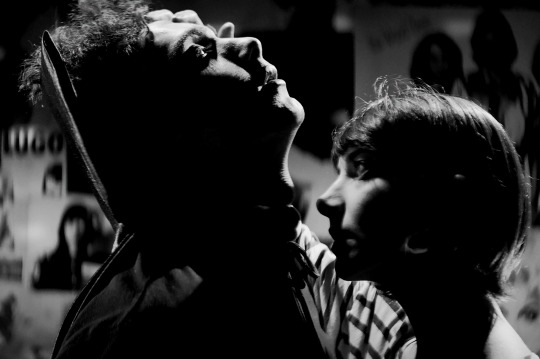
Dokhtari dar šab tanhâ be xâne miravad (2014)
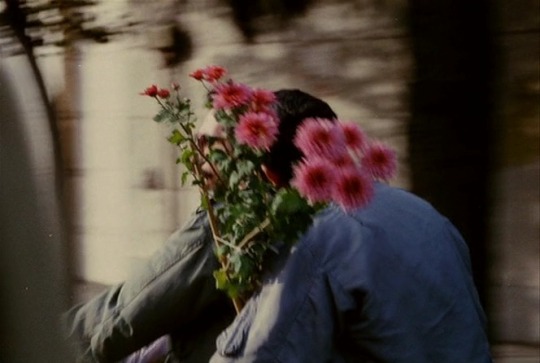
Klūzāp, nemā-ye nazdīk (1990)
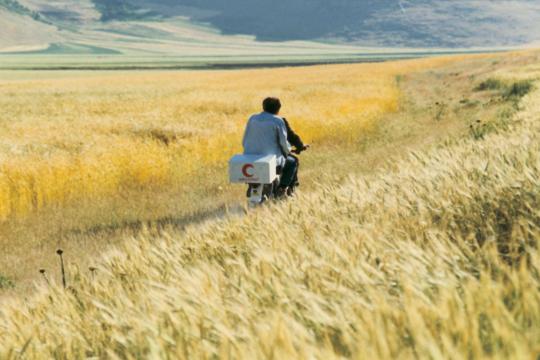
Bād mā rā Khāhad bord (1999)
1 note
·
View note
Text
Seen, Read
02/01 - Night On Earth (1991), Jim Jarmusch
05/01 - Captain Fantastic (2016), Matt Ross
06/01 - Nocturnal Animals (2016), Tom Ford
07/01 - Bacalaureat (2016), Cristian Mungiu
08/01 - Nói Albinói (2003), Dagur Kári
09/01 - Rosso Come Il Cielo (2006), Cristiano Bortone
11/01 - Les Invasions Barbares (2003), Denys Arcand
11/01 - Bikur Ha-Tizmoret (2007), Eran Kolirin
12/01 - 4 Saatlik Hafta, Timothy Ferriss
13/01 - En Man Som Heter Ove (2015), Hannes Holm
14/01 - American Honey (2016), Andrea Arnold
29/01 - Moonrise Kingdom (2012), Wes Anderson
30/01 - La Cara Oculta (2011), Andrés Baiz
03/02 - Only Lovers Left Alive (2013), Jim Jarmusch
04/02 - Büyük Düşün, Donald Trump & Bill Zanker
06/02 - La La Land (2016), Damien Chazelle
12/02 - Le Trou (1960), Jacques Becker
13/02 - 11′e 10 Kala (2009), Pelin Esmer
16/02 - Manchester by the Sea (2016), Kenneth Lonergan
18/02 - Moonlight (2016), Barry Jenkins
21/02 - Çekmeköy Underground (2015), Ayşim Türkmen
28/02 - Dokuz (2002), Ümit Ünal
28/02 - Eyes Wide Shut (1999), Stanley Kubrick
01/03 - Dom Sa Vesanje (1988), Emir Kusturica
02/03 - Diarios De Motocicleta (2004), Walter Salles
19/03 - Forks Over Knives (2011), Lee Fulkerson
23/03 - Sapiens, Yuval Noah Harari
25/03 - Kosmos (2010), Reha Erdem
02/04 - Der Siebente Kontinent (1989), Michael Haneke
09/04 - Beş Vakit (2006), Reha Erdem
2 notes
·
View notes
Text
Amazon Offer Bachmann
Videos Back-and-Forth Operation – Family Garden Trains Sizes and Scales of Big Christmas Trains The Singularity Is Near: When Humans Transcend Biology … Amazon.com: Buttoned Down Men’s Classic Fit Button-Collar … Nói albinói (2003) – IMDb source http://www.rslayouts.com/amazon-offer-bachmann/
0 notes
Photo

Nói Albinói (2003)
Director: Dagur Kári
0 notes
Text
The Icelandic Online course talks about how in Nói Albinói the eponymous main character is this smart boy whose life is tough and whatnot and I’m like... ‘No? He’s a colossal douche to everyone around him and is grating to watch, he’s like the embodiment of everything Tumblr hates about white boys and I have no idea why that film was nominated for an Oscar’
0 notes
Photo

Nói albinói, Dagur Kári (2003)
#nói albinói#dagur kári#2003#noi the albino#tv#winter#iceland#village idiot#genius#fjord#snow#village#bolungarvík#isolation#outsider#alcoholic#alopecia#icelandic#cold#drinking#boredom#albino#escape#dreams#jackpot#rebel#remote town#outcast#palm trees#green wallpaper
3 notes
·
View notes
Quote
Dagur Kari's Noi the Albino (Noi albinoi, 2003) succeeded on the international festival circuit as a film that was both distinctively Icelandic and appealingly universal. Noi the Albino taps into perennial themes of escapism and existential angst, while its setting in the Westfjords of Iceland provided an almost surreal backdrop whose particularities of place are uniquely Icelandic.
Björn Nordfjörd | Dagur Kari's Noi the Albino (x)
#Nói albinói#dagur kári#tómas lemarquis#iceland#2003#seen in... stopped counting#Þröstur leó gunnarsson#elín hansdóttir#rasmus videbæk#words
0 notes
Photo

Nói Albinói (2003)
4 notes
·
View notes
Photo

Nói albinói
2 notes
·
View notes